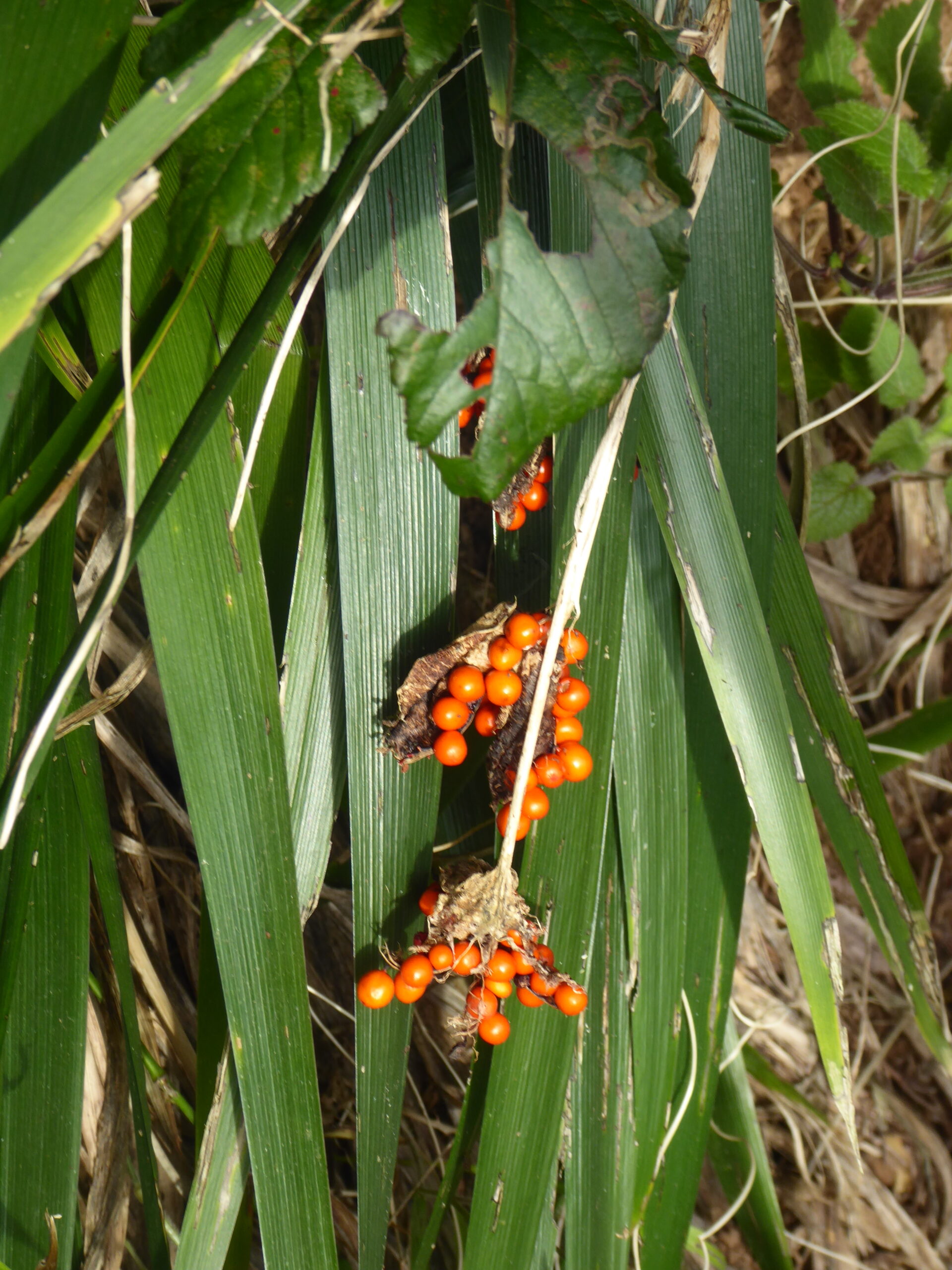Although the ground is still extremely soft and muddy in the watermeadow, I have ventured down Hard Knot Pass, which is strewn with dry grass especially so that we can keep our grip and walk along it. That takes me to the top of Little Venice and directly below the decking. Under the decking is an unchartered territory that we have left well alone since the decking was built so that any voles and mice that were disturbed will come back.
Consequently, I haven’t paid much attention to what’s growing there. It is a steep bank, deeply shaded and I’ve only just noticed the large pods of bright flame berries cupped by broad bladed leaves. Now they are obvious, and I feel slightly sad that I missed the flowers, which are delicate, papery, and lily-shaped in a watery yellow-blue.
The Stinking Iris is so-called because when its leaves are crushed they are said to smell beefy. For this reason it is also called the Roast-beef Plant. Other names are Stinking Gladwin, Gladwin Iris, and Gladdon, all of which refer to the Latin word for sword, which is gladius, referring to the sword-shaped leaves.
It prefers a damp, shady habitat, which is exactly where it is. However, it will tolerate dry shade and is at home by the sea, weathering storms with ease. The berries are toxic to humans, but nutritious to birds, and blackbirds in particular love them.
